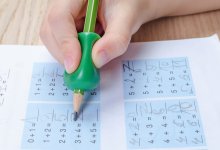K-2 Primary
Explore and share tips, strategies, and resources for helping students develop in elementary school grades K-2.
Bringing High School Students and Kindergartners Together to Make Art
A look at how teachers can have students collaborate across grades on an art project that promotes creativity and teamwork.7.8kYour content has been saved!
Go to My Saved Content.A More Efficient and Productive Way to Conduct Math Assessments
Here’s how to assign graded work that more accurately assesses elementary students’ learning and saves time.Your content has been saved!
Go to My Saved Content.Teaching Young Learners Self-Calming Skills
To help early elementary students manage big emotions, try breathing exercises and sharing how you deal with overpowering feelings.Your content has been saved!
Go to My Saved Content.Tips to Help Students With Their Handwriting
These simple tricks to improve motor skills can empower young learners to feel more in control of their handwriting.Your content has been saved!
Go to My Saved Content.A Framework for Building Older Students’ Literacy Skills
Encouraging middle school students to read books of all genres and reading levels can reignite their interest in reading.Your content has been saved!
Go to My Saved Content.The Sensory Room: Helping Students With Autism Focus and Learn
Imagine a safe space where students with autism can go to calm their bodies and then get back to the business of learning.20.7MYour content has been saved!
Go to My Saved Content.A Fred Rogers–Inspired Approach to SEL
Elementary teachers can focus on these fundamentals of child development to support social and emotional learning.Why Ages 2-7 Matter So Much for Brain Development
Rich experiences—from play to the arts and relationships—fundamentally shape a young child’s development.2.5MYour content has been saved!
Go to My Saved Content.Making Students Feel Safe
A trauma-informed approach ensures that students feel safe, supported, and nurtured—to improve their chances of academic success.2.6MYour content has been saved!
Go to My Saved Content.3 Games to Amp Up Reading Instruction
Gamifying literacy and phonics lessons teaches students valuable social-emotional skills, gives them regular movement breaks, and increases their engagement.Teach Kids When They’re Ready
A new book for parents on developing their kids’ sense of autonomy has some useful insights for teachers as well.2.1MYour content has been saved!
Go to My Saved Content.A Daily Support System for Students
Students who need extra social and emotional support have a quick check-in with an adult at the start and end of each day.1.8MYour content has been saved!
Go to My Saved Content.Is it Time to Drop ‘Finding the Main Idea’ and Teach Reading in a New Way?
Some schools are changing the way they teach reading—based on research that shows background knowledge is more critical to comprehension than general skills like ‘finding the main idea.’1.1MYour content has been saved!
Go to My Saved Content.Building Students’ Number Sense in Elementary Math
To get an internal sense of how numbers relate to each other, students can practice working with number lines.How to Teach Handwriting—and Why It Matters
Teaching young students how to write by hand before moving on to keyboarding can help improve their reading fluency as well.1.2MYour content has been saved!
Go to My Saved Content.











